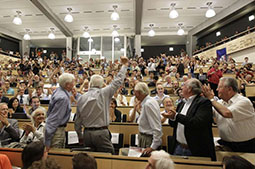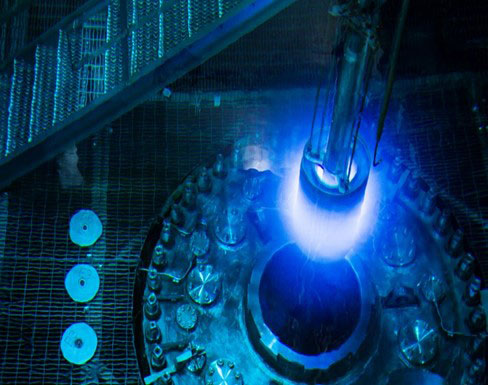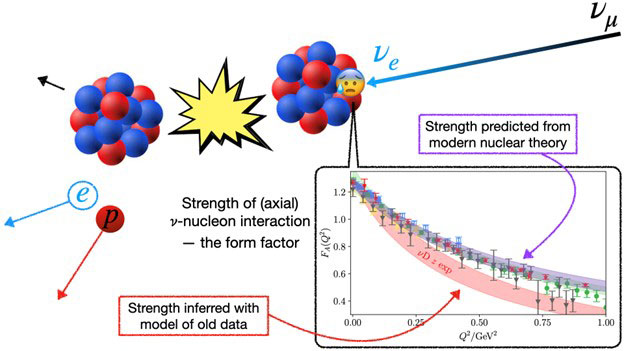About
HEP Mission
The mission of the High Energy Physics (HEP) program is to understand how our universe works at its most fundamental level. We do this by discovering the most elementary constituents of matter and energy, exploring the basic nature of space and time itself, and probing the interactions between them. These fundamental ideas are at the heart of physics and hence all of the physical sciences. To enable these discoveries, HEP supports theoretical and experimental research in both elementary particle physics and fundamental accelerator science and technology. HEP underpins and advances the DOE missions and objectives through this research, and by the development of key technologies and trained manpower needed to work at the cutting edge of science.
HEP, our Nation, and the World

AP Photo Denis Balibouse, Pool
Physicists from around the world celebrate as the announcement of the Higgs boson at CERN. Learn more about US participation in the Higgs discovery here.
Particle physics is a highly successful, discovery-driven science. It explores the fundamental constituents of matter and energy, and it reveals the profound connections underlying everything we see, including the smallest and the largest structures in the Universe.
Particle physics is global. The HEP program pursues the most important opportunities wherever they are, and hosts unique, world-class facilities that engage the global scientific community. HEP supports experiments found deep underground and in outer space, around the U.S. and across the globe. HEP also develops test facilities for future technological breakthroughs in accelerator science as we push our accelerators to higher energy and intensity and our detectors to higher speed and sensitivity.
We partner with other agencies, such as the National Science Foundation and NASA, to engage their scientific and technical expertise, coordinating interagency efforts to ensure effective and efficient progress. We solicit advice from advisory panels to periodically review our role in the nation’s HEP program and provide advice on the formulation of long-range plans, priorities, and strategies. We have collaborative agreements with other countries to pursue the highest priority science and forge lasting relationships based on these shared interests.
Particle physics shares with other basic sciences the need to innovate, invent, and develop technologies to carry out its mission to explore the nature of matter, energy, space and time. Advanced particle accelerators, cutting-edge particle detectors, and sophisticated computing techniques are essential tools for modern particle physics research. The advancement of dedicated technology for particle physics has benefited tremendously from progress in other areas of science. In return, developments within the particle physics community have enabled basic scientific research and applications in numerous other areas. This broad, connected scientific enterprise provides tremendous benefits to society as a whole.



